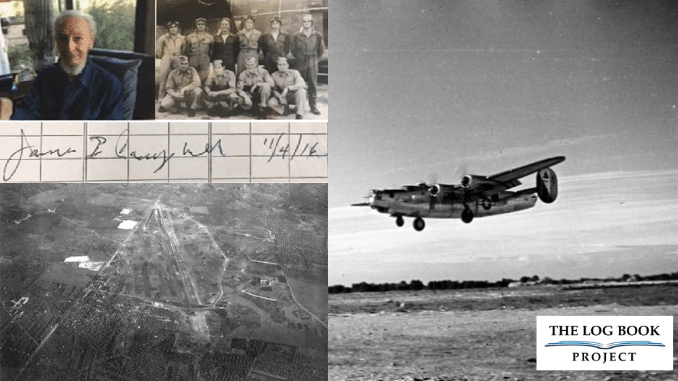
1st Lt James S. “Jim” Campbell of Tucson, Arizona, served as a B-24 Liberator pilot with the U.S. Army Air Corps during World War II. He was born on August 24th, 1922 in Altoona, Pennsylvania and was the third of seven Campbell sons, five of whom served in WWII.
Deployment to Italy
In November of 1944 Campbell and his nine member crew shipped across the Atlantic ocean to Oran, Algeria. From there they transferred to the U.S. Air Base in Manduria, Italy.
Manduria Airfield hosted B-24 Liberator bombers and was home to several units, including groups from the 450th Bomb Group, which conducted long-range bombing missions over Nazi-occupied Europe. From this base, U.S. bombers targeted critical Axis infrastructure such as oil refineries, rail yards, factories, and military installations in countries like Germany, Austria, Hungary, and Yugoslavia.
The base played a vital role in the Allied strategic bombing campaign, helping to weaken the Axis war machine and pave the way for the liberation of Europe.
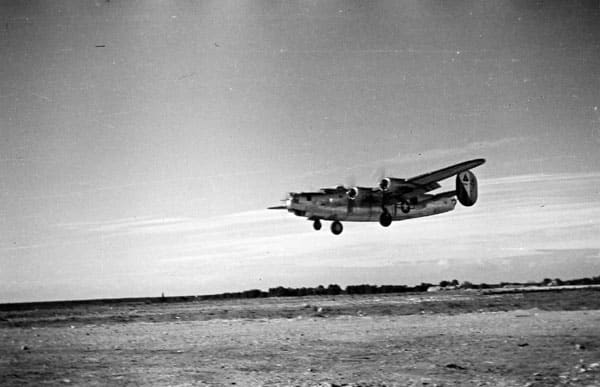
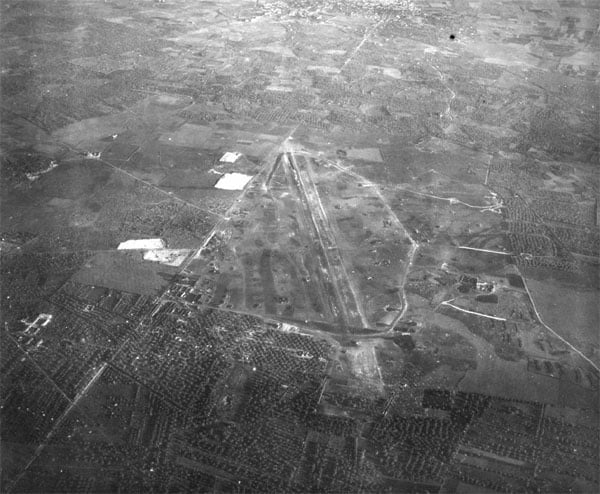
https://www.forgottenairfields.com/airfield-manduria-583.html
720th Squadron, 450th Bomb Group
Campbell was assigned to the 15th Army Air Corps, 450th Bomb Group, 720th Squadron where he flew approximately 30 combat missions over various European countries, including Italy, Germany, Austria, Hungary, and Yugoslavia.
His first mission targeted the east marshaling yards in Sopron, Hungary, on December 6, 1944. Throughout his service, Campbell faced numerous dangers. On one mission over Linz, Austria, his aircraft sustained significant damage, returning with 128 holes from enemy fire.
Tragically, during their thirteenth mission over Italy, the crew’s navigator, Ed Barchuck, was killed in action.
In another harrowing incident, Campbell was initially assigned to fly in the #6 formation position. However, due to takeoff issues with the #5 plane, he was reassigned to that spot. The original #5 aircraft eventually took off and assumed the #6 position. During the mission, Campbell witnessed the #6 plane being destroyed by flak, a stark reminder of the perils faced during these operations.
Old Iron Ass
Known to his crew as “Old Iron Ass” due to Campbell’s tough leadership making sure everyone onboard did their jobs. Someone had actually written that moniker in his hat band but no one ever admitted doing it until years later after the war had ended. Eventually radio man Bob Devine fessed up and admitted to having done it.
Perhaps the best testament and evidence of his leadership was expressed in 1996 by Devine in a letter to Campbell. The two had through the strong bond, that only trauma and combat can forge, kept in contact for decades.
“You were a calm and excellent pilot and we owe our lives to you.”
Campbell flew his final mission on April 17, 1945 which was over Bologna Italy according to the records maintained by the 450th Bomb Group Memorial Association (www.450thbg.com).
After the war and legacy
After the war, Jim used his GI bill to attend Carnegie Tech where he completed his degree in architecture but more importantly met his future wife of 66 years Geraldine (Young).
Being an excellent tenor with the Sons of Orpheus of Tucson, Campbell was on a choir tour in 2000 visiting, of all places, Sopron in Hungary the place targeted for his first mission. While there he met a man who, as a young man, had both legs blown off in a bombing raid during WWII. In talking it became apparent that it was likely the very same raid. They parted parted friends – a true token of the power of reconciliation.
Jim Campbell passed away on February 6, 2018, and is remembered for his dedication and bravery during the war.
Obtaining the signature
Esther Hogan, project founder Nick’s cousin, and her husband Jim who lives in Tuscon, AZ, were visiting Nick in St. Lucia.
In agreeing to take the book back to US to mail it off to the next signatory, the discussion of “why” was only natural. At this time Jim Hogan proceeded to tell of his friend and choir associate, Jim Campbell, who was also a WWII veteran.
Facilitated by Esther and Jim Hogan the project was on 4 November, 2016, graced by Jim Campbell’s signature.
This article is based on the interview conducted at the signing event, we are greatly indebted to them both for recording Campbell’s story for posterity.
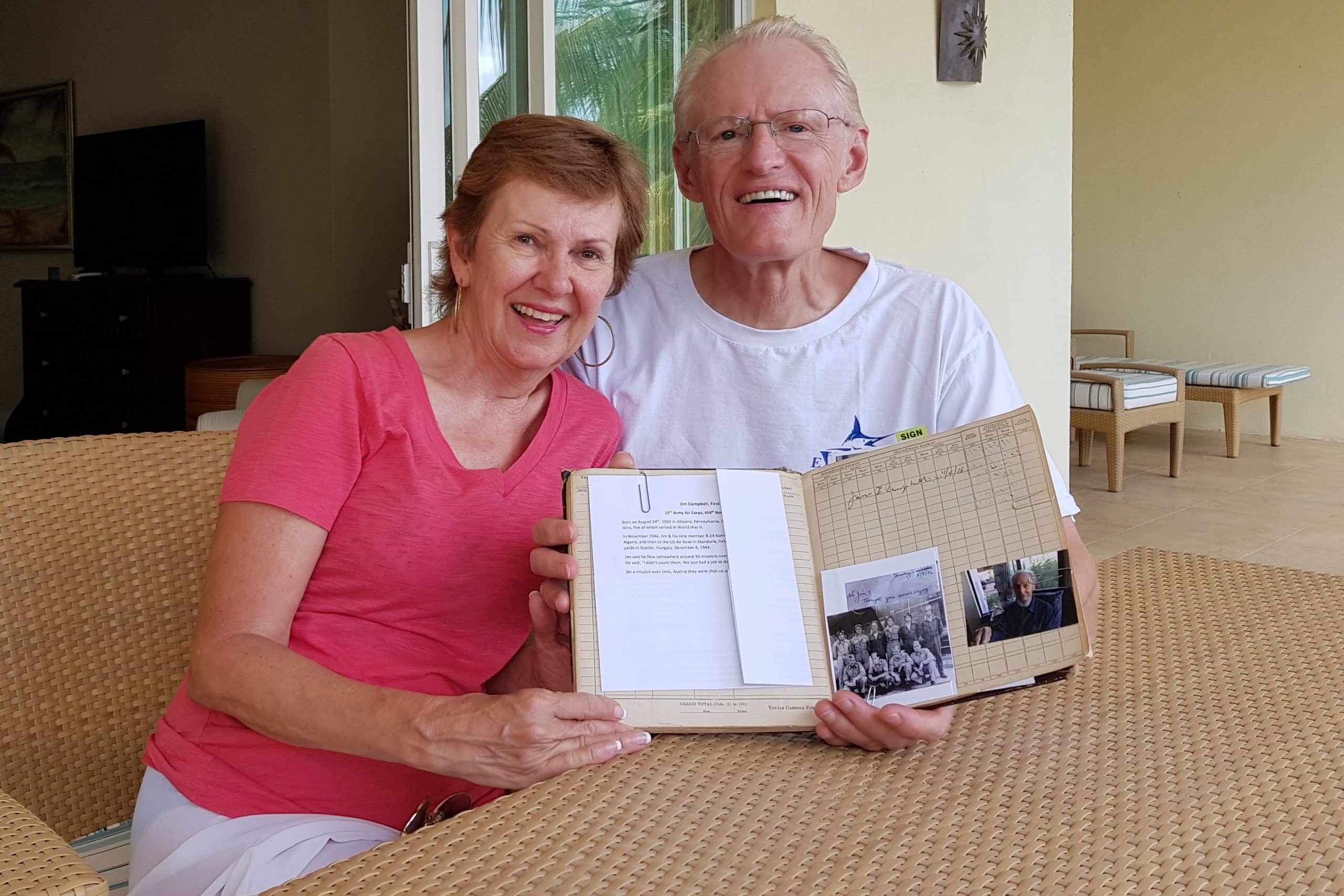


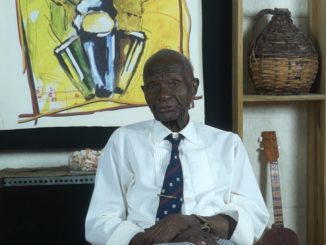
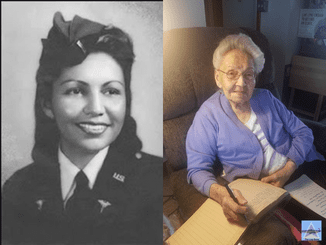
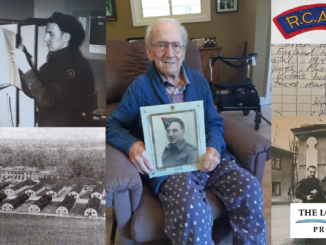
Be the first to comment